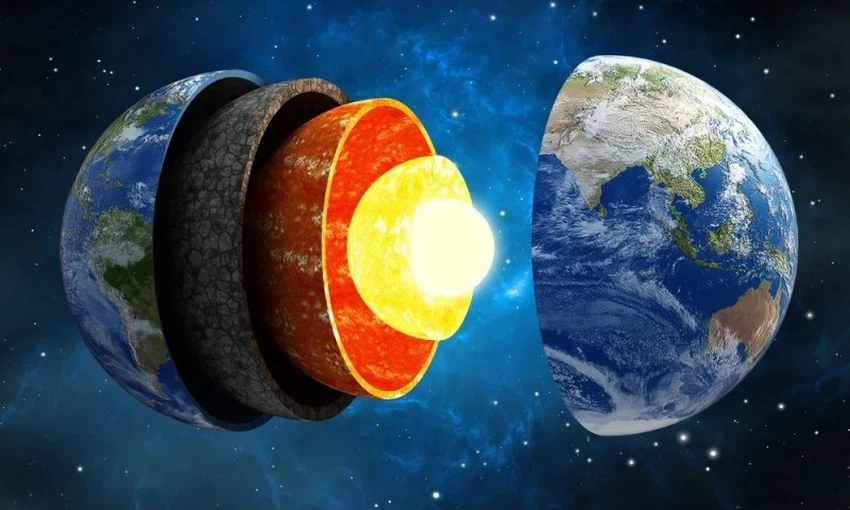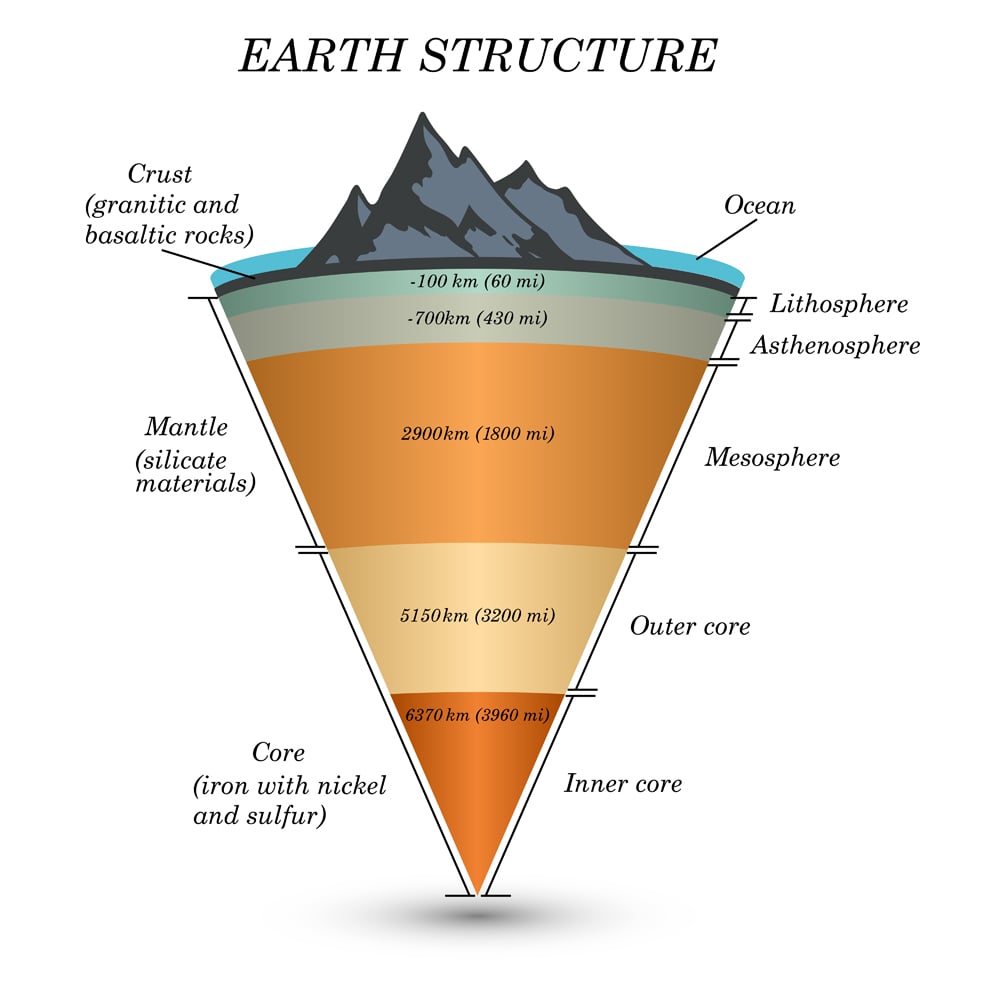Why is the Earth's core so hot? How hot has it stayed so far?
Arab Weather - We know that the core of the Earth is too hot to imagine, so why is it so hot? And if so, where does all this heat disappear, and how does snow accumulate on the surface of the earth with all that heat?
Since the birth of our planet, the core of the earth has been very hot, and this is one of the reasons that have enabled humans to exist on this planet, but before we talk about the temperature of the Earth’s core and its role, let's try to understand more about the earth’s layers.
Earth's geological layers
Although we humans have advanced until we are able to take a picture of a black hole in space, unraveling the mysteries of our planet was not easy at all, however, the analysis of rocks resulting from volcanic eruptions and the study of seismic waves (waves generated inside the Earth due to earthquakes Volcanic eruptions or other disturbance) have helped us to better understand the internal structure of our planet.

(A 3D illustration showing the Earth's multiple layers and structures)
The Earth is not a single homogeneous mass, but rather consists of a number of layers. When the Earth arose with the birth of the solar system about 4.6 billion years ago, our planet was at first just a ball of gases, but when the gases interacted with each other and materials of varying density began to separate, it became The earth as it is today - a huge rocky planet with several successive layers, and these layers are:
1. crust layer (Crust): the crust is the outer layer of the Earth, a class which we live and build houses and plant trees, which consists of a very thin crust if we compare the other layers, the earth 's crust is divided into two types: oceanic crust has a depth of about 8 kilometers, and consists Predominantly basalt, continental crust which is about 32 kilometers thick and mainly consists of granite.
2. layer of the mantle (Mantle): the next layer are known under the crust directly on behalf of the mantle, with a thickness of the mantle 2900 layer of kilometers, and is divided into upper mantle steel, mantle bottom semi - molten, solid upper layer known as the mantle with the crust, the coat lithosphere (Lithosphere) , While the semi-molten layer is called the Asthenosphere .

(Earth layers in cross section and thickness)
3. layer core (Core): The Earth 's core is divided into two parts - the outer core and inner pulp.
- outer core (Outer Core): an outer thickness of about 2300 km pulp, and consists mainly of iron and nickel in the liquid state that is, fully fused, and the outer core is characterized by a very high temperature ranging from 2200 to 2760 degrees Celsius.
- inner core (Inner Core): After the outer core blade to the hottest part of the planet, the inner core, there is a temperature rise can not be imagined, ranging temperature of the core of the internal Earth from 4980 to 7200 degrees Celsius, which is the most exciting part Surprisingly, despite these high temperatures, the inner core of the Earth is completely solid, about 1,200 kilometers thick.
Why is the Earth's core so hot?
For those of us who live in the crust, it is hard to imagine that the Earth's core temperature could be higher than the surface temperature of the Sun, but how does our 4.6 billion-year-old Earth generate all this heat?
There are three main reasons behind the Earth's tremendous heat:
1. Heat at the time of the formation of the planet and the cumulative process: Our planet began its journey around the sun since the beginning of the solar system, and the force of gravity was so strong that a number of meteorites and many other things combined together to form a large planet, and with these cumulative processes the amount of heat produced was enormous.
2. Friction heating resulting from deposition of denser materials in the center of the planet: After the planet formation process ended, the materials began to split into layers according to their density, as the denser materials settled in the core, and this splitting process also produced a lot of heat.
This primitive heat of the earth resulting from the formation process is still present in the core because our large earth was not able to dissipate it quickly when it arose , until this heat stabilized, and the only way now to dissipate this heat is through the crust, but since the plates act as an insulating blanket, The mantle layer is not a good conductor of heat, the heat remains in the core of the earth for a long time.
Arabia Weather App
Download the app to receive weather notifications and more..



